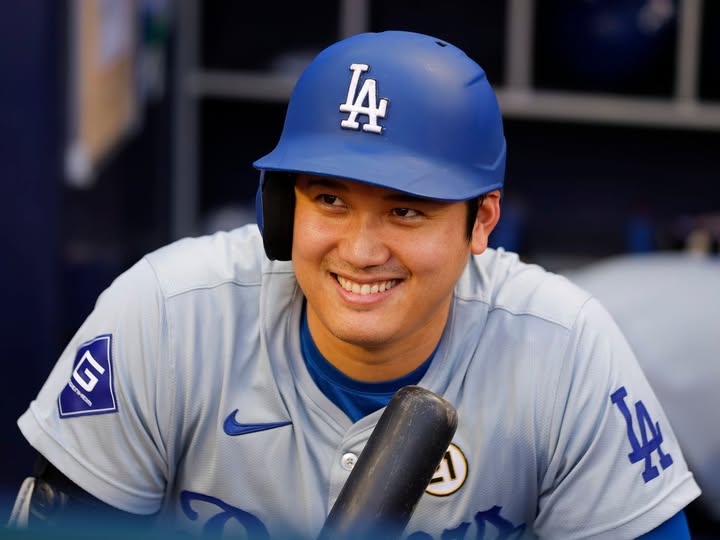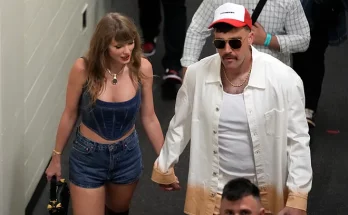In a sport rich with history and tradition, breaking a record is monumental. But matching a record that has stood for 70 years — while still seemingly evolving into a more complete version of yourself — is something reserved for the legends of legends. That’s precisely what Shohei Ohtani just accomplished.
In a jaw-dropping moment that sent shockwaves through Major League Baseball, Ohtani equaled a record many thought would never even be approached again — the kind of achievement that typically lives in black-and-white photos and grainy radio broadcasts. And yet, here we are, in 2025, watching a player not just match the past, but redefine what’s possible in the present.
The Record That Refused to Fall — Until Now
To understand the magnitude of what Shohei Ohtani has just done, we need to go back to 1955, when a man named Duke Snider — a Hall of Fame slugger for the Brooklyn Dodgers — accomplished something extraordinary: he hit 25 home runs and stole 20 bases by the halfway point of the season.
It was a blend of power and speed that, at the time, represented a perfect storm of athleticism. The game was different then — fewer teams, different travel schedules, no advanced analytics or hyper-optimized training regimens. And still, Snider’s record endured. For seven decades, that power-speed combo hadn’t been matched.
Until now.
Shohei Ohtani, now with the Los Angeles Dodgers and hitting like a man on fire, just equaled that mark. But here’s the kicker: Ohtani is a two-way player, arguably the greatest we’ve seen since Babe Ruth — and even he never did this.
The Numbers That Matter: A Statistical Earthquake
Through 73 games in the 2025 season, Shohei Ohtani boasts:
- 25 home runs
- 20 stolen bases
- A batting average north of .320
- An OPS well over 1.000
- Multiple game-winning hits
- And some of the fastest sprint speeds in the league
There’s simply no box he doesn’t check.
These numbers don’t live in isolation. They are interwoven into wins, into turning points, into momentum swings for the Dodgers — a team that already has stars like Mookie Betts and Freddie Freeman. Yet somehow, Ohtani stands apart, not just because of the numbers, but because of the aura.
A New Dimension of Greatness
What makes this feat so monumental isn’t just the numbers. It’s that Ohtani seems to be transcending the structure of baseball itself.
Traditionally, a player is either a power hitter or a speedster. Rarely both. Rarely dominant in both.
And never a pitcher, too.
Even now, though his pitching has taken a pause as he recovers from elbow surgery, the sheer threat of Ohtani returning to the mound — all while breaking offensive records — adds a mythical quality to what he’s doing.
He’s not just matching old records. He’s re-defining the context in which those records even matter.
The Cultural Impact: A Global Icon
Shohei Ohtani is no longer just a baseball star. He’s a global cultural phenomenon. In Japan, his every swing is followed with breathless anticipation. In Los Angeles, he’s surpassed even some Hollywood icons in terms of visibility. Across the MLB landscape, he is the epicenter of attention.
With this record-tying moment, MLB’s international viewership has once again surged. Social media is flooded with side-by-side graphics of Duke Snider and Ohtani, often with captions like “Different Eras, Same Greatness — Or Is Ohtani Greater?”
For younger fans who never heard of Duke Snider, the education has begun. For long-time purists, the comparison reaffirms the power of history and legacy. For all, Ohtani has made baseball relevant beyond the borders of America.
What Teammates and Opponents Are Saying
Mookie Betts on Ohtani:
“It’s like watching Bo Jackson and Barry Bonds had a baby — and he’s humble on top of it.”
Freddie Freeman:
“Every day you show up to the park wondering what Shohei’s going to do next. And every day, he delivers something crazier than the last.”
Opposing Pitcher (who remained anonymous):
“There’s no good pitch to throw him. None. And if he gets on base, he’ll steal second. It’s demoralizing.”
Ohtani’s presence has not only made the Dodgers scarier — they were already contenders — it’s made them feel inevitable.
The Historical Echoes: Ruth, Bonds, A-Rod — and Now Ohtani
When discussing players who blend power and speed, names like Barry Bonds, Alex Rodriguez, and Ken Griffey Jr. come up. All were transcendent. All had seasons with gaudy home run and stolen base totals. But none did it while also threatening to be their team’s best pitcher.
And Babe Ruth? The Sultan of Swat may still hold the title of most iconic, but even he never stole 20 bags while also hitting 25 homers in the first half.
Ohtani now joins a tier that isn’t just elite. It’s singular.
This record-tying moment has unlocked a conversation: Is Ohtani now the greatest single-season talent we’ve ever seen?
The numbers argue yes. The eye test argues yes. The fans? They’re just enjoying the show.
Dodgers’ Masterstroke: The $700 Million Gamble Paying Off
When the Dodgers signed Shohei Ohtani to a record-breaking $700 million contract — with a heavily deferred structure — there were skeptics. Some wondered if the injury risk was too high. Others balked at the cost.
But now?
He’s looking like a bargain.
Dodger Stadium has become a sold-out temple of Ohtani worship. Jerseys are flying off the shelves. Japanese media has created a second press corps inside the stadium. And, most importantly, the Dodgers are winning.
They currently hold one of the best records in baseball, and Ohtani is their beating heart.
The front office’s willingness to push the boundaries of payroll for generational greatness is proving to be one of the wisest investments in sports history.
What Comes Next? The Path Beyond the Record
Now that Ohtani has tied Duke Snider’s mark of 25 homers and 20 steals in the first half, the natural question is: Can he break it?
Absolutely.
The Dodgers have 9 games left before the All-Star break. Ohtani is averaging a home run every 2.8 games and a stolen base roughly every 3.5. He could realistically finish the half with 30 home runs and 23–25 steals — numbers that would obliterate the existing benchmark.
Then there’s the MVP conversation. It’s not just leaning his way — it’s sprinting.
If he keeps this pace, we could see:
- 60+ home runs
- 40+ stolen bases
- A .330 batting average
- And the return of his pitching presence in September or the postseason
We’re watching not just a great player, but a complete offensive monster — and possibly, by October, a fully restored two-way threat.
Shohei Ohtani in the Eyes of the Game
Hall of Famer Pedro Martinez recently said:
“I’ve never seen anything like him. He’s rewriting the blueprint of what an athlete can be.”
Derek Jeter, now an analyst, added:
“You expect dominance from pitchers. You expect greatness from hitters. You don’t expect both in one person. Shohei is the glitch in the simulation.”
This sentiment is everywhere. Former players are in awe. Analysts are re-writing metrics. Fans are re-imagining what a baseball hero can look like.



